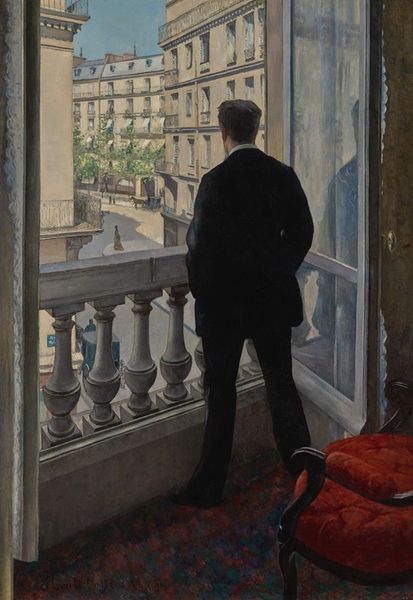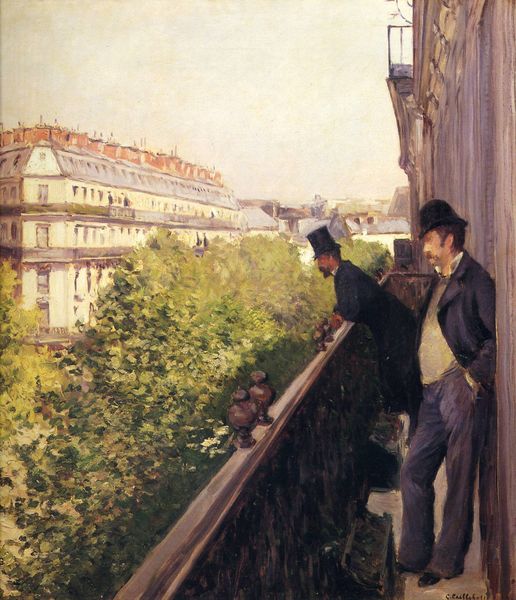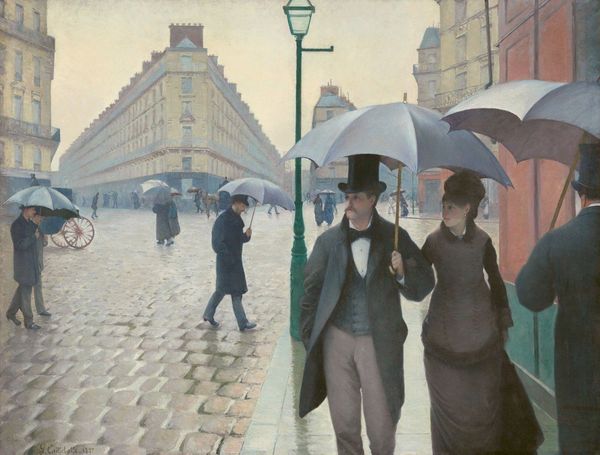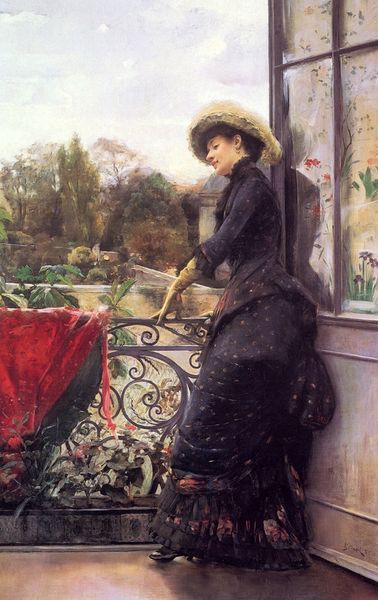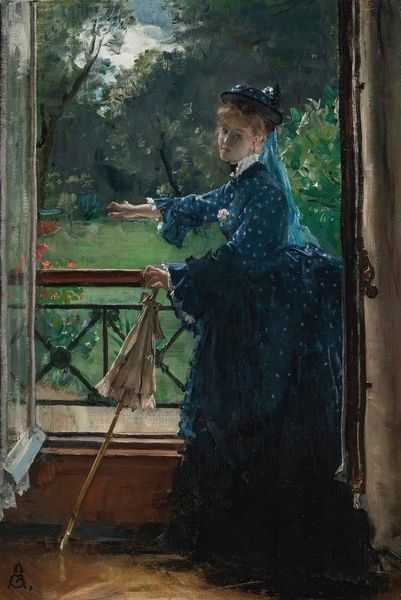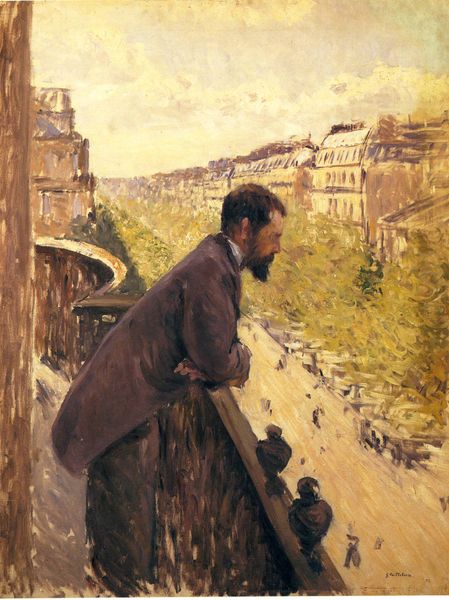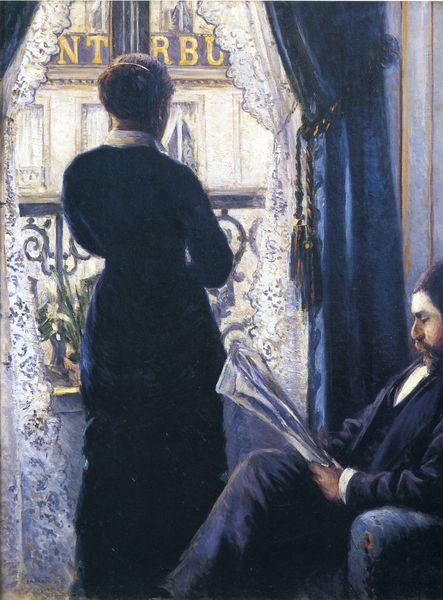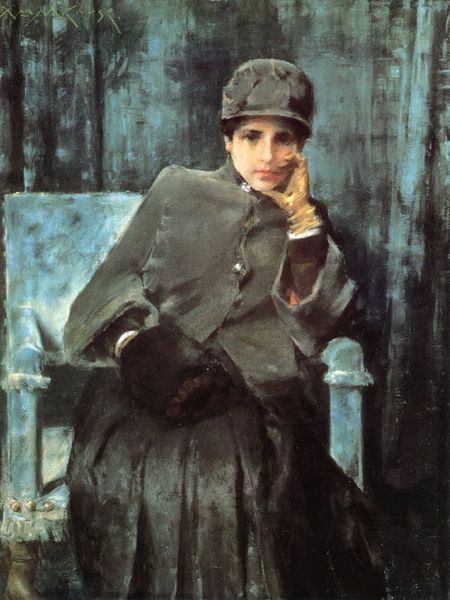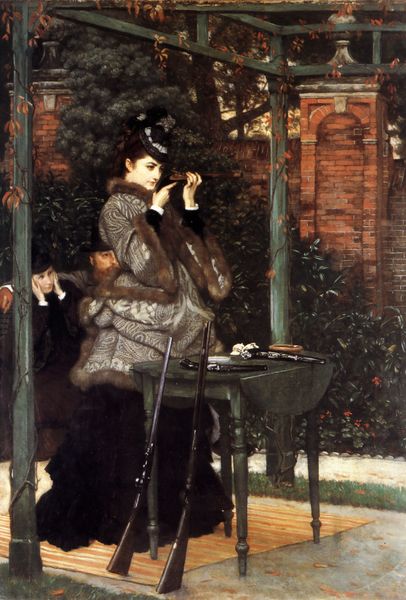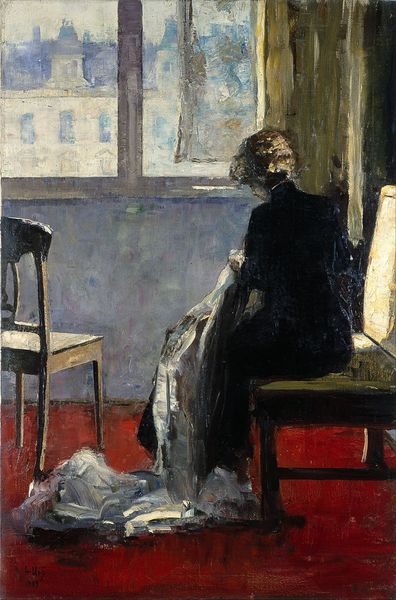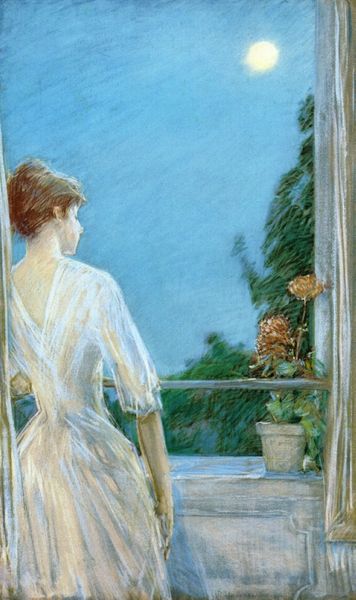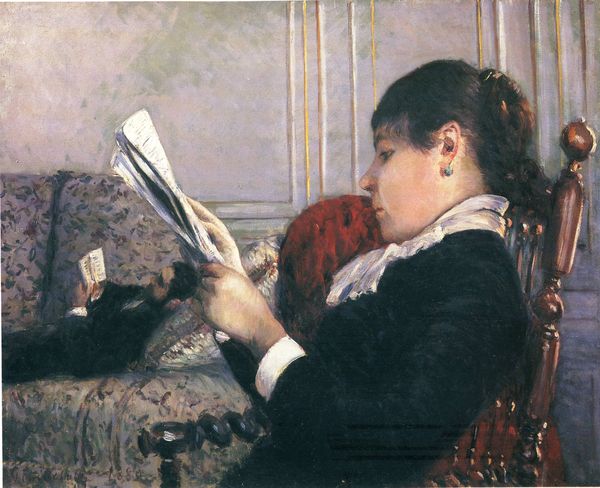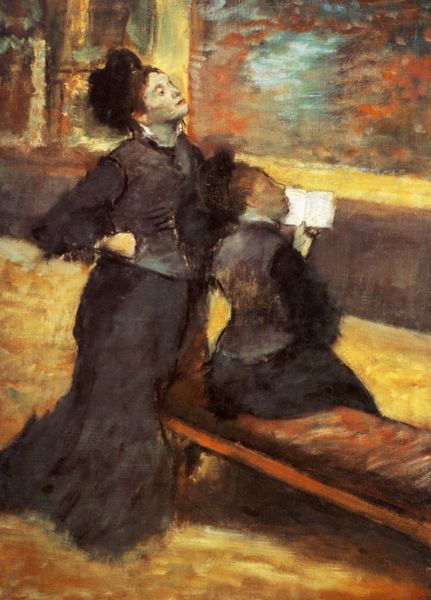
oil-paint
#
portrait
#
flâneur
#
impressionism
#
oil-paint
#
landscape
#
oil painting
#
cityscape
Copyright: Public domain
Editor: So, this is Gustave Caillebotte's "Man on a Balcony, Boulevard Haussmann," painted around 1880, using oil paint. I’m struck by the contrast between the man, confined by the balcony, and the expansive cityscape. What do you see in this piece, especially considering its historical context? Curator: That contrast is key. Caillebotte captures the modern flâneur, the urban observer, but I'd argue he critiques the privilege inherent in that position. Who *could* afford that balcony, that detached gaze onto a changing Paris? Think of the Haussmann renovations – the displacement, the reshaping of social structures. Is this man observing, or is he complicit in a system that benefits him? Editor: That’s interesting! I hadn't considered the angle of privilege and complicity. I just saw a man enjoying the view. Curator: Exactly. But consider the top hat, the tailored coat. These aren't neutral garments; they signal status. Caillebotte, himself from a wealthy family, was acutely aware of class dynamics. He uses impressionistic techniques—the play of light, the fleeting moment—to paint the new boulevards, but he also seems to hint at the social costs. Do you notice how the buildings in the distance seem almost identical, regimented? Editor: Now that you mention it, yes, they do. Almost like a symbol of imposed order. Curator: Precisely. So, perhaps the "enjoyment" you initially perceived isn't so simple. The painting becomes a commentary on the alienation and societal stratification of modern urban life. Is Caillebotte celebrating modernity or questioning it? That tension is what makes this piece so compelling. Editor: That definitely shifts my understanding. I appreciate how you've woven together the art historical and the socio-political. Curator: Art is never created in a vacuum, and looking through the lenses of social and historical context allows us to gain a deeper understanding of its meanings.
Comments
No comments
Be the first to comment and join the conversation on the ultimate creative platform.
